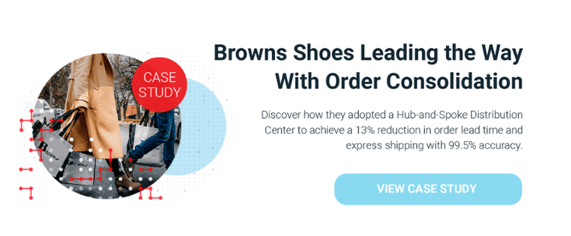What Exactly is Retail Order Consolidation?

Retail Order Consolidation is the ability to bring together all the merchandise of an online order with multiple products into one single shippable package. Bringing the complete multi-product order into one single package to be shipped means saving on packaging, delivery, and is what most customers expect when placing an order.
What? … How difficult could that be?
Intuitively this sounds simple but, it is much harder for retailers to achieve systematically than you would think. If you are a small retailer with a single store, and stock all your merchandise in one location; this is a non-issue. It is natural to put the entire order into one box for one shipment, because all your stock is in one place. Easy and efficient. This is also the case for online pureplay retailers with only a single distribution center, and NO physical bricks & mortar stores to consider. How about the rest of retail?
What About Omnichannel Retailers?
Omnichannel retail is where retail order consolidation becomes much more challenging. A significant advantage of the omnichannel strategy is that a robust order management system can optimally find, and fulfill orders with merchandise from in-store inventory. That’s for both online orders, mobile order and orders placed at an in-store kiosk, for example. Locations that can ship-from-store, receive fulfillment instructions from the order management system. These instructions include which merchandise to be picked, packed and shipped against a shopper’s online order.
What Could Go Wrong?
Ok, we’ve got it. A retailer’s senior management sets out the omnichannel strategy. Part of that strategy is to leverage in-store inventory as much as possible. Ship-from-store is a priority. This has a very positive effect of improving the inventory velocity within the stores across the chain.
However, almost all but the most advanced order management systems will then try to use in-store inventories, to a fault. For the multi-product order, a simpler OMS will try to fulfill from store inventories. It finds the store closest to the ship-to location, that has most of the goods to fulfill the order. The OMS requests the items from that store to be picked, packed and shipped right away. Then the remainder of the order is sent to the next best store location that is relatively near the customer’s location, and tries to fulfill the order as best possible.
If the order is still not completed, then the OMS send the remainder of the order to the third best location balancing the distance to customer and goods found in the store’s inventory. As you can see, the logical error is the OMS has now fulfilled the simple order above with a minimum of three packages, incurring three shipping fees.
Ok, seriously. Does this happen in real-life? Yes, it does. This exact scenario played out with my wife’s online purchase of five pair of socks, and two lipstick balms. They shipped the order in three large boxes, in three separate shipments, over the course of three days. As an industry savvy customer, I was saddened to think about the negative margins impacting the retailer due to these excessive shipping and packing costs. This retailer paid more in shipping this order, than the total value of the goods in the boxes.
Retail Order Consolidation: Possible?
Yes. When considering a new order management system a retailer should ask vendors about whether their system can manage a retail order consolidation. All advanced systems can handle a retail order consolidation. Furthermore, you will want that system which allows you to turn this feature on and off easily. There are times when getting part of the order to the customer as fast as possible, is more important than waiting for the entire order to be consolidated into one shipment. However, for most of the season, a retailer will save significant packing and shipping costs, if they set the order management system to consolidate orders into a single box and shipment, before fulfilling the order.
Look at your current figures. What is the average number of shipments per online order you receive? Do you have more than one shipment per order? If so, your operation can benefit from an advanced order management system that can fulfill using retail order consolidation!



